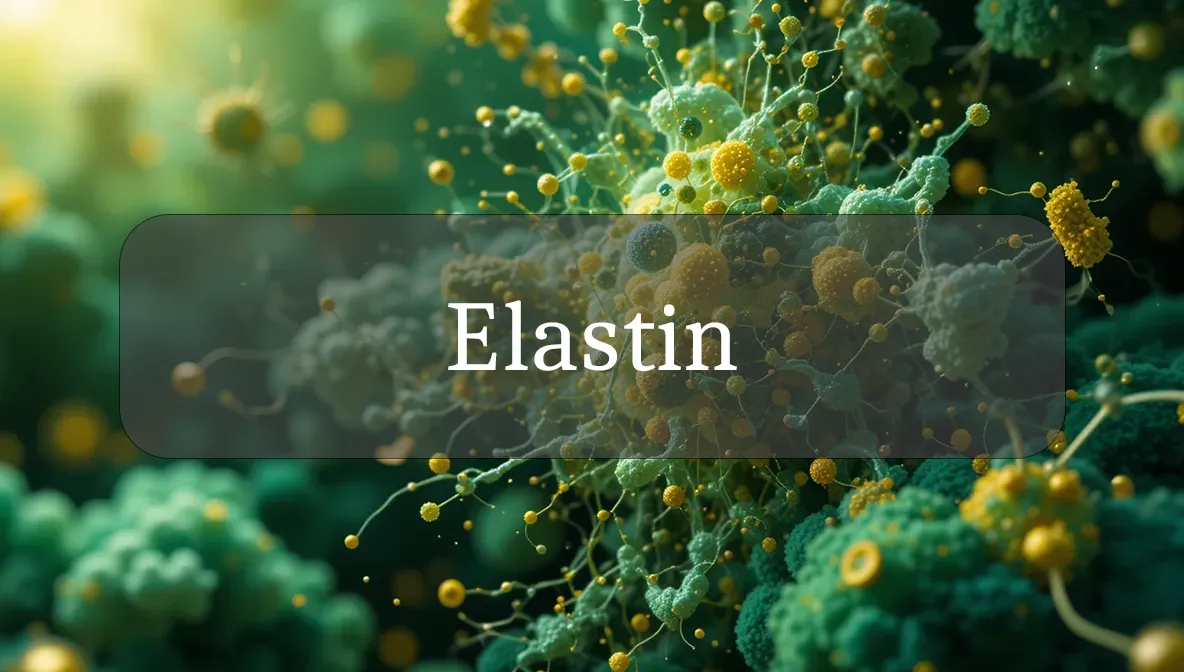Structural Protein for Elastic Tissues and Resilience
Fibrillin is like your body’s architectural blueprint, a protein that forms the scaffolding for elastic fibers in connective tissues, ensuring flexibility and strength in your skin, blood vessels, and eyes. As a key component of microfibrils, it’s vital for health-conscious folks aiming to maintain tissue integrity and vitality. Understanding fibrillin can empower you to make choices that support your connective tissues and overall wellness. Let’s explore what fibrillin is, why it matters, and how you can nurture its function for daily vitality!
Chemical Identity and Type
Fibrillin is a large glycoprotein, a body signal made of approximately 2,900 amino acids, primarily produced by fibroblasts in connective tissues. It’s the main component of microfibrils, which are thread-like structures that provide a framework for elastin deposition in elastic fibers. Found in skin, aorta, lungs, and the eye’s suspensory ligaments, fibrillin works with elastin to create stretchy, resilient tissues. Think of it as the scaffolding that supports your body’s elastic infrastructure, ensuring durability and flexibility.
Biological Role and Benefits
Fibrillin is a cornerstone of your connective tissue and organ health, offering these benefits:
- Elastic Tissue Support: It enables tissues like blood vessels and lungs to stretch and recoil, maintaining blood flow and breathing efficiency.
- Eye Health: Fibrillin stabilizes the lens in the eye via suspensory ligaments, supporting clear vision and focus.
- Skin Resilience: It contributes to skin flexibility, reducing sagging and maintaining a firm, youthful appearance.
- Skeletal Integrity: Fibrillin supports connective tissues in bones and joints, enhancing stability and mobility.
- Growth Regulation: It sequesters growth factors like TGF-β, fine-tuning tissue development and repair.
Healthy fibrillin levels keep your tissues flexible, organs functional, and vision sharp, enhancing overall vitality.
Dietary or Natural Sources
Your body produces fibrillin naturally, relying on amino acids and nutrients for synthesis. You don’t get fibrillin directly from food, but you can support its production and protect microfibrils with these nutrient-rich choices:
- Protein-Rich Foods: Chicken, fish, eggs, and legumes provide amino acids like glycine and cysteine for fibrillin synthesis.
- Vitamin C-Rich Foods: Oranges, strawberries, and bell peppers support collagen and microfibril stability, complementing fibrillin’s role.
- Zinc-Rich Foods: Oysters, pumpkin seeds, and beef aid connective tissue health and repair processes.
- Antioxidant-Rich Foods: Berries, leafy greens, and green tea protect fibrillin from oxidative damage due to aging or UV exposure.
A balanced diet with these nutrients supports fibrillin production and connective tissue health.
Signs of Imbalance or Dysfunction
Fibrillin dysfunction (often due to genetic mutations, aging, or environmental damage) may show up as:
- Joint Hypermobility: Overly flexible joints or frequent dislocations, as seen in Marfan syndrome.
- Vision Problems: Lens dislocation or nearsightedness, linked to weakened eye ligaments.
- Skin Issues: Stretch marks, thin skin, or sagging due to reduced elastic fiber support.
- Vascular Issues: Aortic dilation or aneurysms, indicating weakened blood vessel walls (serious and requires medical attention).
- Skeletal Abnormalities: Long limbs, curved spine (scoliosis), or chest deformities in genetic disorders.
These symptoms can have many causes, so if they persist or are severe, consult a healthcare provider to explore connective tissue or fibrillin-related issues.
Supporting Optimal Levels or Function
To protect fibrillin and maintain elastic tissue health, try these evidence-based tips:
- Eat Nutrient-Dense Foods: Include fish, citrus fruits, or nuts to provide amino acids and antioxidants for fibrillin support.
- Protect Skin and Tissues: Use broad-spectrum sunscreen (SPF 30+) and avoid smoking to prevent UV or toxin-induced fibrillin damage.
- Exercise Moderately: Low-impact activities like yoga, swimming, or walking promote blood flow and tissue resilience without overstressing connective tissues.
- Monitor Heart Health: Regular check-ups, especially if you have a family history of aortic issues, can catch fibrillin-related vascular concerns early.
- Stay Hydrated: Drink water to keep tissues moist, supporting the flexibility of fibrillin-containing structures.
Small, consistent habits create a fibrillin-friendly environment for resilient, elastic tissues.
Safety, Interactions, and Precautions
Fibrillin is a natural protein and safe when functioning properly, but consider these factors:
- Genetic Disorders: Conditions like Marfan syndrome or Ehlers-Danlos syndrome involve fibrillin gene mutations (FBN1) and require medical management, including regular heart and eye monitoring.
- Aging: Fibrillin microfibrils degrade over time, increasing the need for protective habits like antioxidant-rich diets and UV protection.
- Supplements: No direct fibrillin supplements exist, but collagen or vitamin C supplements may support connective tissues. Consult a healthcare provider before use.
- Medications: Beta-blockers or other drugs used in Marfan syndrome management can affect fibrillin-related tissues (e.g., aorta). Discuss with your doctor.
Protecting fibrillin balance means safeguarding connective tissues from damage and supporting overall health.
Fun Fact
Did you know fibrillin keeps your eye’s lens perfectly centered? Its microfibrils act like tiny suspension cables, holding the lens in place so you can focus on the world with crystal-clear precision!
Citations
- National Institutes of Health (NIH): Fibrillin and Connective Tissue Disorders.
- Mayo Clinic: Marfan Syndrome and Elastic Fibers.
- Cleveland Clinic: Nutrition and Connective Tissue Wellness.
- World Health Organization (WHO): Diet and Musculoskeletal Health Guidelines.
- USDA: Dietary Guidelines for Americans – Nutrient-Dense Diets.

